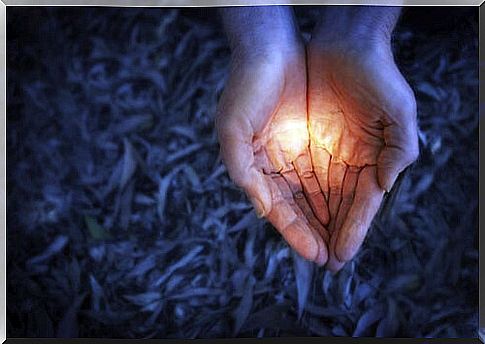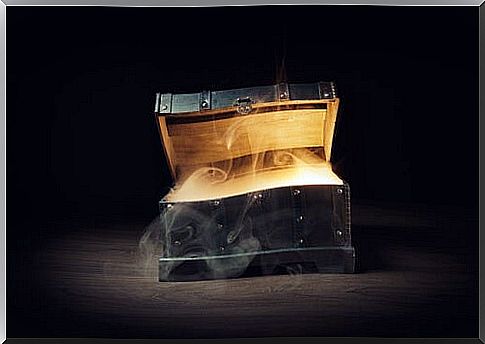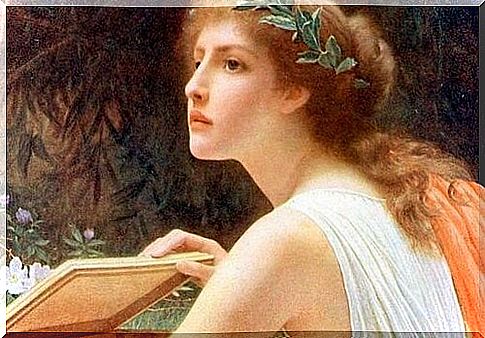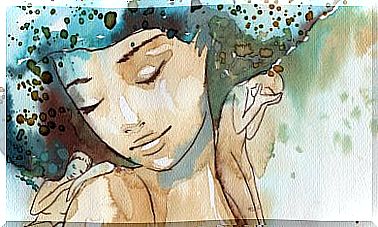The Pandora Effect: People Always Hope

The Pandora effect explains an undoubted gift that defines humanity itself. Even in the midst of the most complex and dire adversity, we people conserve in the depths of our being a resource, a lifeboat, a root that is difficult to uproot: hope.
The fact that this is so is not a coincidence, but an almost instinctive strategy of our brain that seeks to keep our spirits afloat even in the worst circumstances.
It is true that sometimes this gift loses its wake, that it remains very deep in our existential box and we hardly feel its heat and its push. However, in most of us that breath of hope is very present that helps us to see the present with perspective. It is a spring that takes us by the hand to prevent us from going down, whispering words of confidence.
Emily Dikinson defined hope precisely as a feather that rests on our soul to sing songs without words. It was, for the famous poet, a melody that rocks us and that always pushes us to go forward.
However, and here comes perhaps the most curious nuance, the Pandora effect tells us about something else. It is an ability that has also made us rarely give up as a species … Our curiosity.

The Pandora effect: hope and curiosity as mechanisms of mental health
We all know the legend of Pandora. The myth tells that it was modeled by Hephaestus and that Pallas Athena, the goddess of wisdom, helped him. They created her beautiful and gave her intelligence.
Now, that young woman was endowed with life and will by a plan that Zeus drew up beforehand. It was to be offered to Epimetheus, brother Prometheus, the Titan who stole the sacred fire from the god of Olympus.
When Epimetheus saw her, he was overwhelmed by all his virtues, but Pandora came to him with a poisoned wedding gift, a jug that contained all the evils in the world. Unable to resist, the girl did not hesitate to open the lid of that object to find out what was inside, and it happened …
Disease, evil, greed, selfishness and all forms of misfortune were blown away with the wind, reaching every corner, every city, every mortal heart that had never known hardship before.
At the bottom of that jar there was only something that Pandora could contain: hope. There are those who see in that woman the example of recklessness, mistrust and recklessness.
However, Zeus knew very well what he did when he ordered the creation of this mythical figure: Pandora represents the hunger for knowledge and curiosity. It symbolizes the transgression and in turn, the desire for survival. She, like humanity itself , is defined by the desire to know and by the preservation of a good that keeps us safe: hope.

The Pandora effect: curiosity and hope
The Pandora effect tells us that people are naturally curious and that, sometimes, we border on risk by letting ourselves be carried away by it.
However, sometimes we have no other choice. Because only by being risky we achieve great things. Only curiosity helps us to improve ourselves, to be able to see present and complex realities with other more flexible and optimistic approaches.
With the Pandora effect these two exceptional dimensions are combined: curiosity and hope. Let’s think of these two spheres as two essential drivers for our mental health, as coping and well-being mechanisms.
In those circumstances, where uncertainty, fear and even anxiety surround us, the mind relaxes and expands in turn if we inject it with a curious vision and surround it at the same time with the embrace of hope.

Our brain, a Pandora’s box
A study carried out at the University of Chengdu (China) describes the brain in a curious way: it is a box in which a special component is always integrated: hope. This element acts as a protector against negativity and stress and is also located in a very specific corner of that brain structure: in the medial orbitofrontal cortex.
It is in this region where the Pandora effect is activated: we process information relating it to future rewards or illusions. This is where our ability to motivate ourselves, to solve problems and set long-term goals is located.
Chinese researchers define the medial orbitofrontal cortex as that switch that acts as a protector, as a safeguard against negative and irrational thoughts.
Activating it in difficult times should be our greatest responsibility.

Hope is feeling empowered to face adversity
The Pandora effect reminds us that hope is not just about keeping a positive outlook on life. It is making use of a curious and constructive approach that seeks solutions to problems. It is to understand that sometimes we fail, that things can get more complicated than we think, which does not mean that we continue to move forward.
Hope is not a passive attitude, it is an active tool that encourages us to mobilize ourselves to remember our vital meanings and fight for them. Let’s keep it in mind in difficult times, let’s not let go of what Pandora managed to contain in time in her jar as a precious treasure for humanity.









